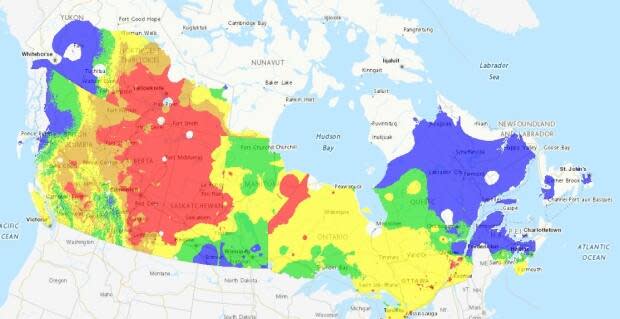Fire ban in effect for Hay River as southern N.W.T. under extreme wildfire danger

A fire ban will remain in effect in Hay River for the foreseeable future as the southern N.W.T. remains under extreme wildfire risk.
The N.W.T. government said a grass fire was reported on the nearby Kátł'odeeche First Nation Reserve on Friday, but it was quickly extinguished.
Just weeks ago residents of the town and reserve waited anxiously for the risk of flooding to pass as ice broke up on the river. One year ago Hay River experienced devastating flooding that destroyed homes and infrastructure.
"We do not want to see [fire] come through, that's for sure. Especially after everything we've been through," said Mayor Kandis Jameson, who added the fire ban has been in place for about the past week.
Temperatures across the southern N.W.T. have regularly been above 20 C throughout May and are expected to get even warmer in the next few days.

Mike Westwick, a wildfire information officer with the N.W.T., said the danger facing the South Slave, North Slave and Dehcho comes from a combination of the heat and a lack of rain.
"So we're starting off the season dry and we've seen this spell of record temperatures and extremely hot weather that's leading to drier forests, which leads to fire," Westwick told Hilary Bird, host of CBC's the Trailbreaker.
As of Friday evening, along with the grass fire in Kátł'odeeche First Nation, there's been one other fire in the N.W.T. near Fort Smith — it was declared under control on May 7.
The forecast is also calling for the possibility of lightning storms in some parts of the South Slave, which raises the likelihood of more fires to come.
"Lightning is the main cause of natural forest fires in the Northwest Territories, it is a natural part of the cycle, but sometimes they do spark close to things that people value and that's going to put stress on firefighters if they do spark," Westwick said.
With the potential of lightning caused fires in the coming days, Westwick said the territory is urging residents to avoid having any fires which could potentially spread.
He said the N.W.T. has limited resources and with most of western Canada expected to be under the threat of wildfires, it could be more difficult to receive any assistance if the situation becomes severe.
Concern in communities
In Kakisa, a community devastated by fires in 2014, Ka'a'gee Tu First Nation Chief Lloyd Chicot said there is concern among community members that the dry conditions could be ripe for a fire from the nearby campsite.
"People come up from other communities and just have a big party and bonfire and that," he said.

Chicot said the community is still in recovery from the 2014 fire and houses are still being rebuilt.
In Enterprise, resident John Leskiw said he believes his community is prepared for the wildfire risk.
The territorial government awarded the community in 2018 for its fire preparedness plan.
"So while I am mildly concerned about the fire risk, Enterprise does have one of the best fire breaks in the territory from what I understand, so I'm not overly concerned," he said.
But he said the potential for historically high temperatures brings other risks, including heatstroke.
"Certain houses, like many ones in Enterprise, don't have a full air conditioning system because why would you need one in the North?" Leskiw said.
"And so you can really start to feel the heat in the houses this time of year."


